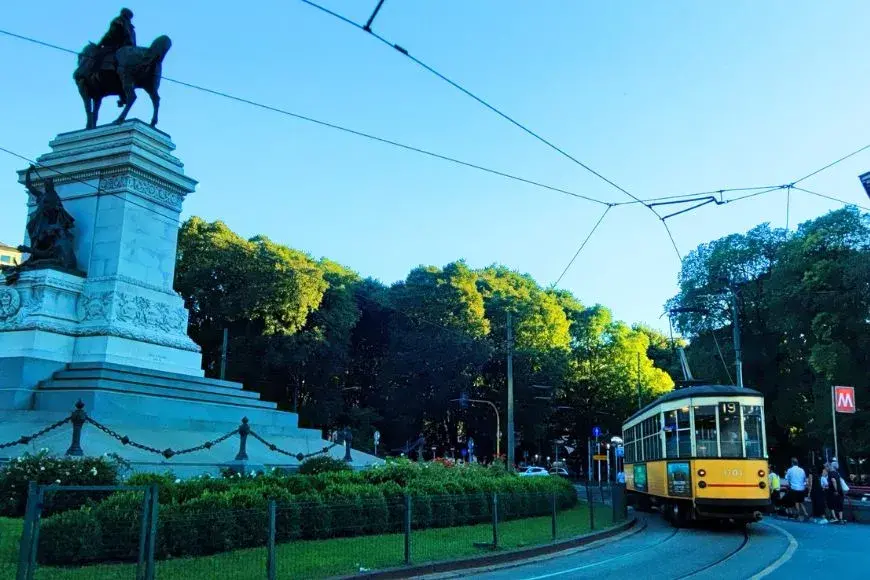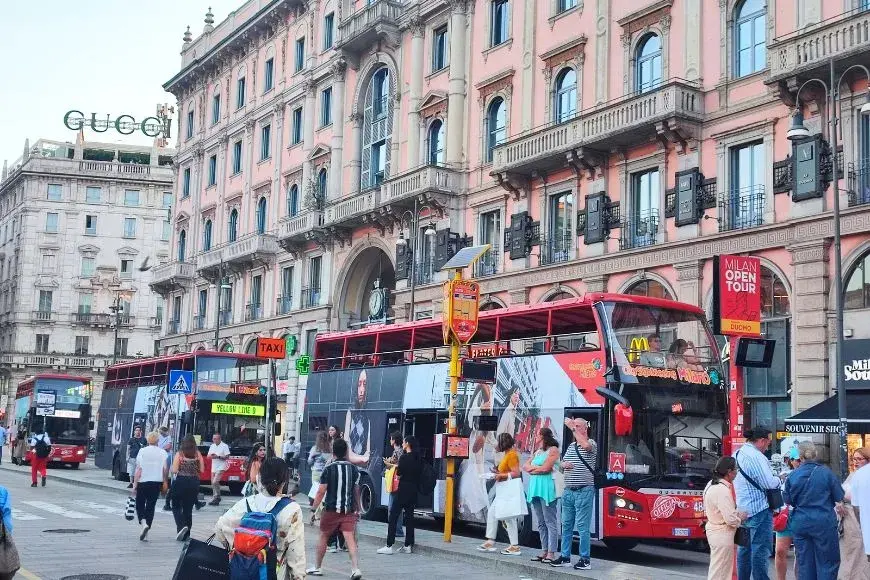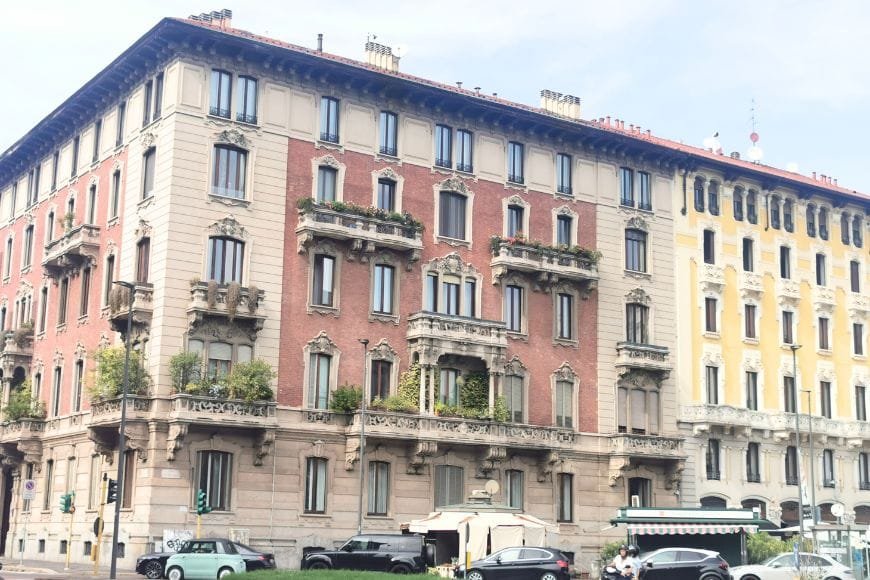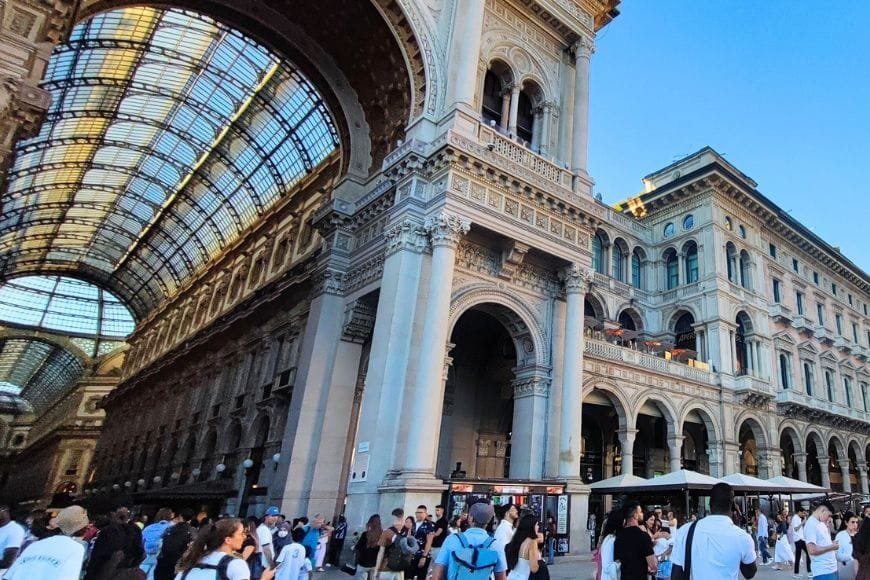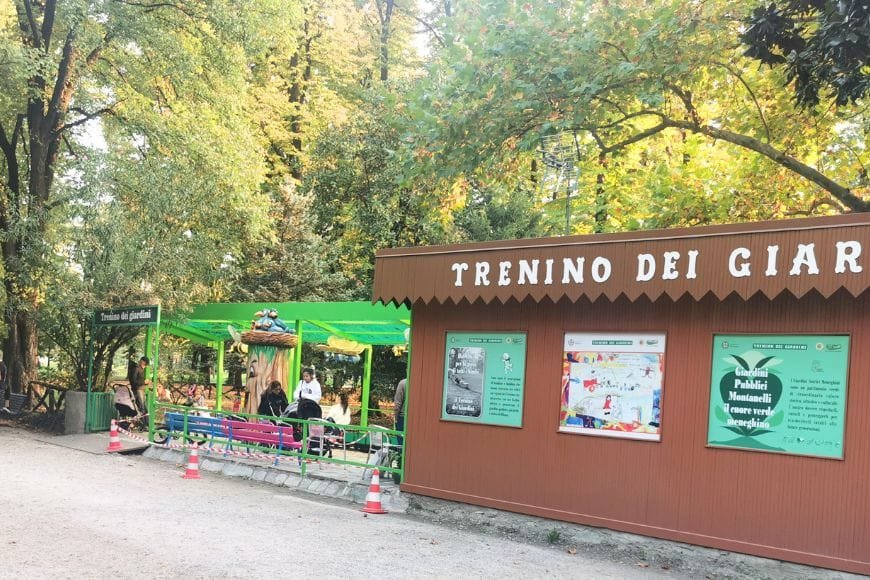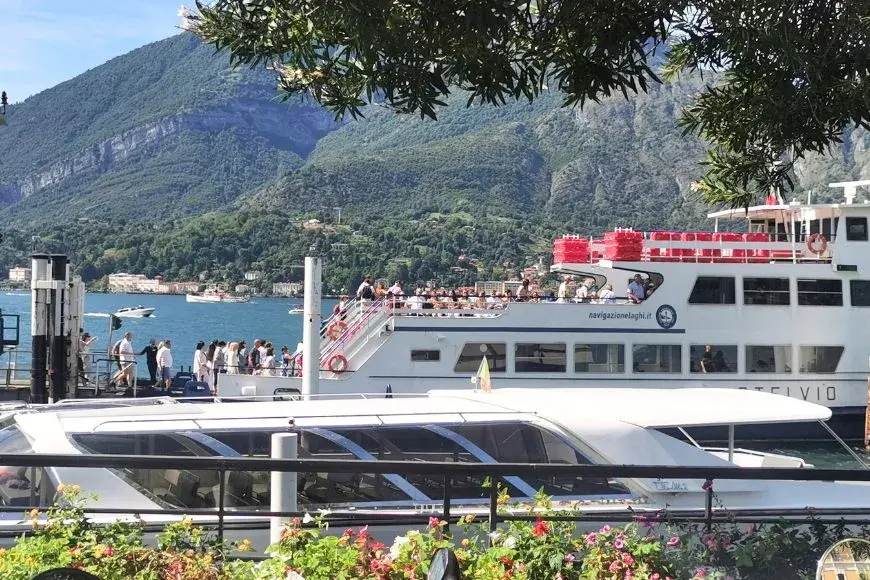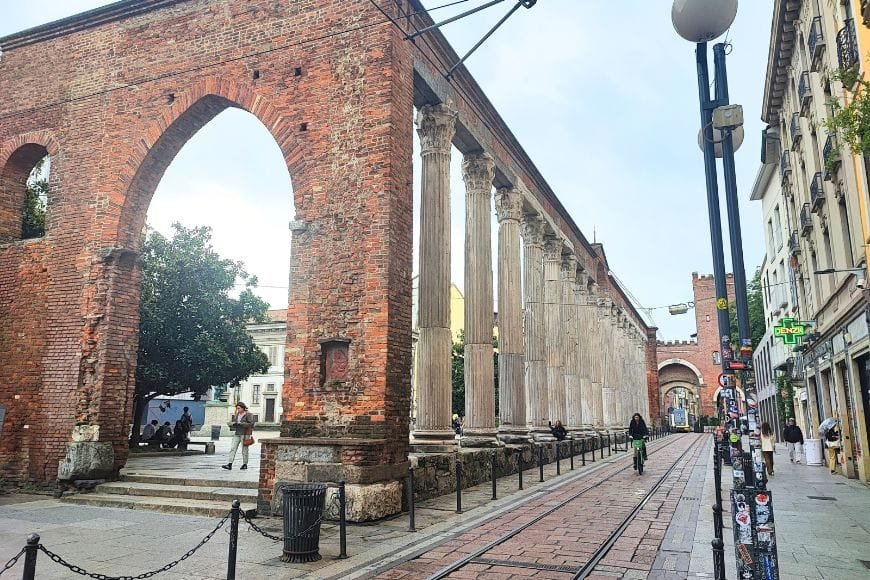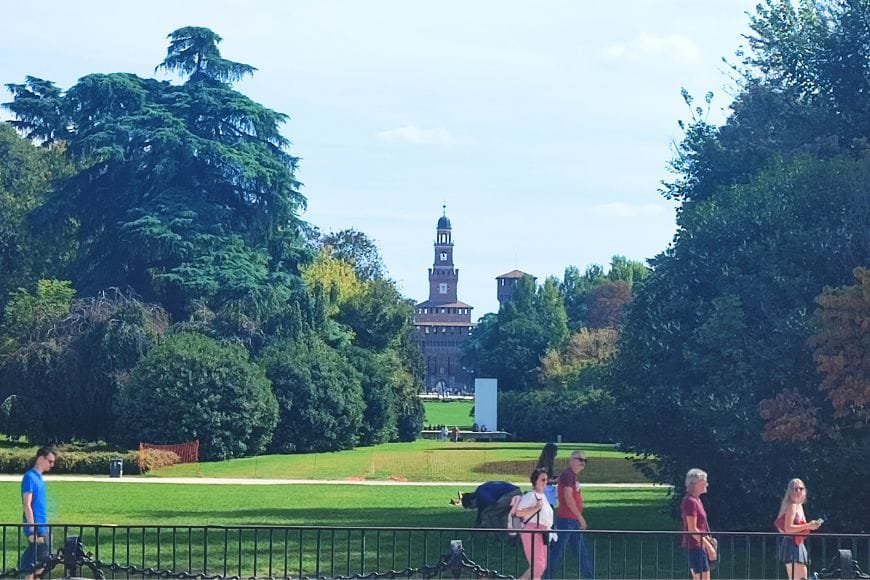Italy Travel Costs: Budget, Mid-Range and Luxury Options (2025 Guide)

by Mary | Last Updated December 20, 2025
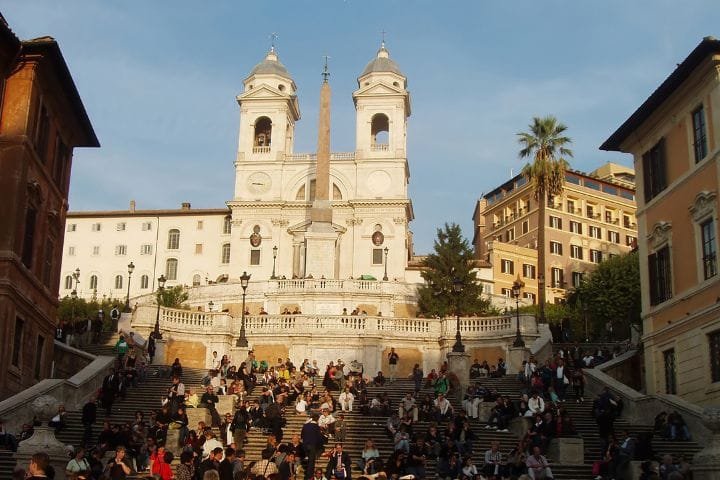
Planning a trip to Italy in 2025? Whether you’re backpacking on a shoestring budget, enjoying a comfortable mid-range vacation, or splurging on luxury experiences, knowing the real costs will help you plan smarter and avoid those unpleasant financial surprises that can derail an otherwise perfect Italian adventure.
After falling in love with Italy over a dozen visits since my twenties — from budget hostels in Rome to luxury resorts on the Amalfi Coast — I’ve learned that traveling here can be surprisingly affordable or shockingly expensive, depending entirely on your choices and timing. The gap between a €60 daily budget and a €600 daily splurge often comes down to knowing where to save and where it’s worth spending extra.
Italy rewards travelers who know the system: you can savor incredible pasta for €8 at a neighborhood trattoria or pay €45 for mediocre tourist food near the Colosseum. Stay in a charming guesthouse for €50 or a generic hotel for €400 during peak season — the magic’s the same if you make informed choices.
This comprehensive guide breaks down real Italy travel costs across every category, from accommodation and dining to transportation and activities. You’ll get honest budget breakdowns for different travel styles, seasonal pricing insights, and practical money-saving tips that actually work. Let’s dive into it!
How Much Does a Trip to Italy Cost? (Quick Overview)
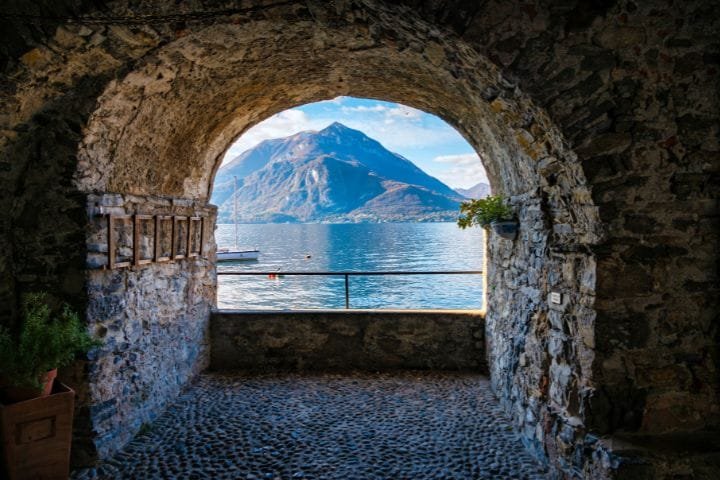
Here’s the straight answer: a one-week trip to Italy can cost anywhere from €600 (budget) to over €5,000 (luxury), depending on your travel style, season, and itinerary. But those numbers don’t tell the whole story – let me break down what you actually get for your money.
Quick Cost Comparison: Budget vs Mid-Range vs Luxury
| Travel Style | Daily Cost | Weekly Cost | What You Get |
|---|---|---|---|
| 💰 Budget | €60–90 | €420–630 | Hostels, street food, public transport, free attractions |
| 🏨 Mid-Range | €150–250 | €1,050–1,750 | 3-star hotels, mix of dining, trains, paid attractions |
| 👑 Luxury | €350–700+ | €2,450–4,900+ | 4–5 star hotels, fine dining, private tours, premium experiences |
These ranges reflect my experience traveling in Italy in different styles over the years. The budget option requires careful planning but delivers authentic experiences, while luxury travel opens doors to exclusive access and premium comfort that can genuinely enhance your Italian adventure.
Seasonal Price Fluctuations That Matter
Peak Season (June-August): Expect 30-50% higher costs across all categories, with some Amalfi Coast hotels tripling their rates.
Shoulder Season (April-May, September-October): Sweet spot pricing with 15-25% savings compared to peak summer.
Low Season (November-March): Dramatic savings of 40-60% on accommodation, though some coastal businesses close entirely.
From my travels, May and September offer the best value-to-experience ratio – excellent weather with manageable pricing that doesn’t punish your budget for peak season timing.
Italy Regional Cost Variations
Most Expensive:
- Venice (especially near San Marco) – expect 25-40% higher costs than mainland Italy
- Amalfi Coast during summer – luxury pricing even for basic accommodations
- Milan city center – business travel keeps prices elevated year-round
Best Value:
- Southern Italy (Puglia, Calabria) – authentic experiences at 30-40% lower costs
- Smaller Tuscan towns vs Florence – same charm, significantly lower prices
- Sicily – incredible food and culture with budget-friendly pricing
Rome and Florence: Fall somewhere in the middle, with significant price variations between tourist areas and residential neighborhoods.
The key insight I’ve learned: Italy’s costs vary more by specific location and timing than by region alone. A neighborhood trattoria in expensive Venice might cost less than a tourist restaurant in “affordable” Sicily. Smart travelers focus on understanding local pricing patterns rather than making broad regional assumptions.
Italy Travel Costs by Category
Understanding how much you’ll spend in each category helps you allocate your budget strategically and identify where you can save versus where it’s worth splurging for a better experience.
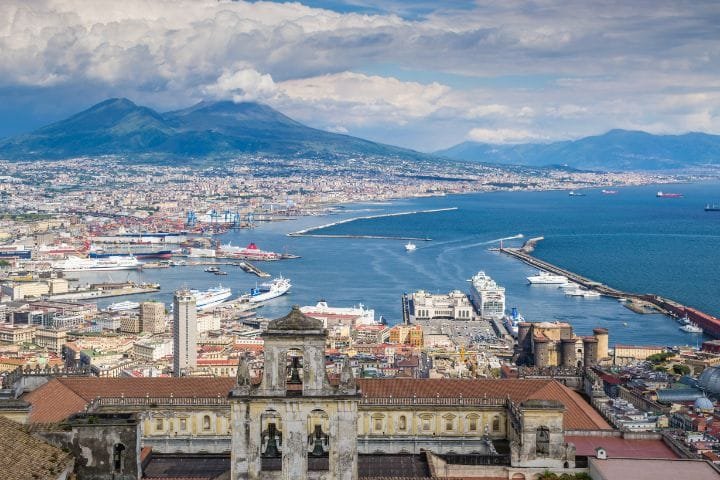
Accommodation Costs in Italy
From €25 hostels to €800+ luxury suites, Italy offers a wide range of stays for every budget. The accommodation category often represents your largest expense, so getting this right significantly impacts your overall trip cost.
Budget Accommodation (€25-60 per night):
- Hostels: €25-40 in major cities, often including breakfast and kitchen access
- Budget hotels: €35-60 for basic private rooms with shared bathrooms
- Airbnb shared rooms: €30-50, great for meeting locals and getting insider tips
Mid-Range Accommodation (€70-180 per night):
- 3-star hotels: €80-150 with private bathrooms, often including breakfast
- Private Airbnb apartments: €60-120, excellent for longer stays and families
- Agriturismos: €70-130 for authentic farm stays with incredible food experiences
Luxury Accommodation (€200-800+ per night):
- 4-star boutique hotels: €180-350 in historic palazzos with character
- 5-star luxury hotels: €300-600+ with premium locations and amenities
- Exclusive resorts: €500-1,200+, especially on Amalfi Coast and Lake Como
City-Specific Accommodation Examples
Rome:
- Budget: €35-50 (hostels near Termini, basic hotels in residential areas)
- Mid-range: €90-160 (3-star hotels near historic center, good Airbnbs)
- Luxury: €250-500+ (boutique hotels in Trastevere, luxury near Spanish Steps)
Hotel Recommendations:
Hotel De’ Ricci
The Liberty Boutique Hotel
citizenM Rome Isola Tiberina
Hotel Trecento
Hotel Forum
Hotel Centro Cavour
NH Collection Roma Giustiniano
Hotel Diplomatic
Venice:
- Budget: €40-65 (mainland Mestre hostels, basic guesthouses in Castello)
- Mid-range: €120-220 (canal-view apartments, 3-star hotels away from San Marco)
- Luxury: €350-800+ (palatial hotels on Grand Canal, luxury suites with terraces)
Hotel Recommendations:
Hotel Bella Venezia
Hotel Dell’Opera
Hotel Bisanzio
Albergo Commercio e Pellegrino
Avani Rio Novo Venice Hotel
Belle Arti Hotel
Pesaro Palace
A La Locanda di Orsaria
Florence:
- Budget: €30-55 (hostels near train station, basic accommodations in Oltrarno)
- Mid-range: €80-150 (boutique hotels, well-located apartments)
- Luxury: €200-450+ (luxury hotels with Duomo views, villa-style accommodations)
Hotel Recommendations:
Orto De Medici Hotel
Hotel Paris
Hotel Balestri
Hotel Jane
Amalfi Coast:
- Budget: €45-80 (limited options, mainly in Salerno or inland towns)
- Mid-range: €150-280 (coastal hotels with sea views, vacation rentals)
- Luxury: €400-1,200+ (cliffside resorts, infinity pool hotels, private villas)
Money-Saving Accommodation Strategies
Book shoulder season: April-May and September-October offer 25-40% savings with excellent weather.
Consider location trade-offs: Staying 15-20 minutes outside historic centers can halve accommodation costs while maintaining easy access via public transport.
Try agriturismos: These farm stays provide authentic experiences with excellent food at mid-range prices, especially valuable in Tuscany and Umbria.
Use Airbnb strategically: Best value for stays longer than 3-4 nights, especially for families or groups needing kitchen access and multiple rooms.
Book direct for perks: Many Italian hotels offer better rates, free breakfast, or room upgrades when booking directly rather than through third-party sites.
From my accommodation experiences across Italy, the sweet spot often lies in well-located 3-star properties or carefully chosen Airbnbs that provide authentic neighborhood experiences without luxury pricing. The key is balancing location convenience with budget constraints while ensuring the accommodation enhances rather than detracts from your Italian adventure.
Food & Dining Costs in Italy
Food costs in Italy vary dramatically based on where and how you eat, but the good news is that even budget dining can be absolutely delicious if you know where to look. Expect to spend €10–15 for a quick meal, €25–40 for a mid-range restaurant, and €100+ for fine dining with wine.
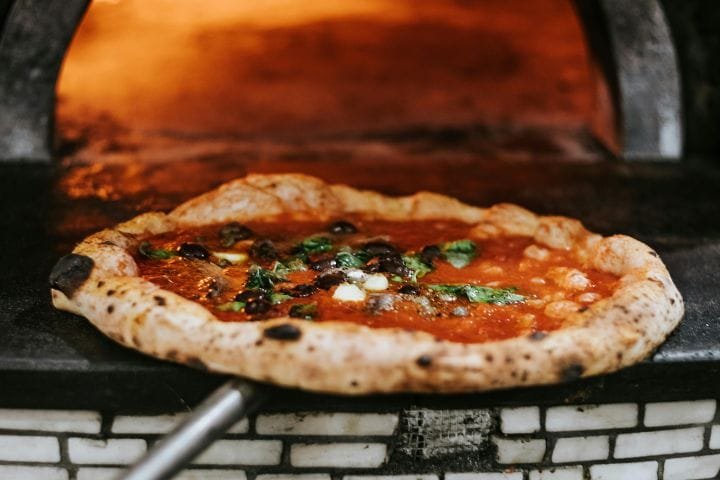
Street Food & Quick Bites (€3-12):
- Pizza al taglio: €2-5 per slice, sold by weight at local shops
- Panini and tramezzini: €3-7 for substantial sandwiches
- Gelato: €2-5 depending on location and number of scoops
- Market food: €4-10 for fresh produce, local specialties, picnic supplies
- Cornetto and coffee: €3-5 for a typical Italian breakfast
Casual Dining – Trattorias & Osterias (€15-35 per meal):
- Lunch menus (menu del giorno): €12-18 including primo, secondo, and drink
- Aperitivo: €8-15 for drinks with substantial free food spreads (6-8 PM)
- Local trattorias: €18-25 for pasta, house wine, and simple dessert
- Neighborhood pizzerias: €8-15 for authentic Neapolitan-style pizza
- Wine bars with cicchetti: €15-25 for small plates and local wine
Mid-Range Restaurants (€30-60 per meal):
- Tourist-area restaurants: €25-45 for a full meal with wine
- Quality regional cuisine: €35-50 for authentic local specialties
- Wine-focused dining: €40-60 including wine pairings
- Seafood restaurants: €35-55, especially in coastal areas
Fine Dining & Michelin Experiences (€80-200+ per meal):
- Michelin-starred restaurants: €120-250+ for tasting menus
- High-end wine experiences: €100-180 with premium wine selections
- Exclusive venues: €150-300+ for unique locations or celebrity chefs
Hidden Dining Costs to Know About
Coperto (cover charge): €1.50-4 per person at most restaurants – this isn’t a scam, it’s standard practice covering bread, table service, and utilities.
Water charges: Still or sparkling water costs €2-4 per bottle. Tap water is safe, but not always offered automatically.
Service expectations: Tipping isn’t required, but rounding up or leaving 5-10% for excellent service is appreciated.
Regional Food Cost Variations
Most Expensive Dining:
- Venice tourist areas: 40-60% markup near major attractions
- Amalfi Coast restaurants: Premium pricing for coastal locations with views
- Milan city center: Business dining keeps prices elevated
Best Food Value:
- Bologna and Emilia-Romagna: Incredible cuisine at reasonable prices
- Southern Italy: Authentic experiences with significantly lower costs
- Neighborhood areas in major cities: Walk 3-4 blocks from attractions for local pricing
Smart Dining Strategies from Experience
Embrace aperitivo culture: Between 6-8 PM, many bars offer substantial free food with drink purchases – this can easily substitute for dinner while providing authentic social experiences.
Lunch vs dinner pricing: The same restaurant often charges 30-40% less for lunch than dinner, with identical quality and smaller portions.
Avoid restaurants with multilingual menus near attractions: These tourist-focused places typically offer mediocre food at inflated prices.
Shop at local markets: Buying fresh ingredients for picnics or simple meals can reduce daily food costs to €15-20 while providing authentic cultural experiences.
Ask locals for recommendations: Some of my best Italian meals came from asking shop owners, hotel staff, or locals where they actually eat.
Time your splurges strategically: One or two fine dining experiences per week create memorable highlights without destroying your budget.
The beautiful reality about Italian food costs is that delicious, authentic meals don’t require expensive restaurants. Some of my most memorable Italian dining experiences cost under €20 per person at neighborhood trattorias where locals gather after work. The key is understanding that food quality in Italy correlates more with authenticity and local knowledge than with price tags.
Transportation Costs in Italy
Transportation expenses can vary wildly based on your travel style and route choices, but understanding the options helps you optimize both cost and convenience. Local transport starts at €1.50 for a bus ticket, while a week-long rental car can cost €200–€500 depending on season and model.
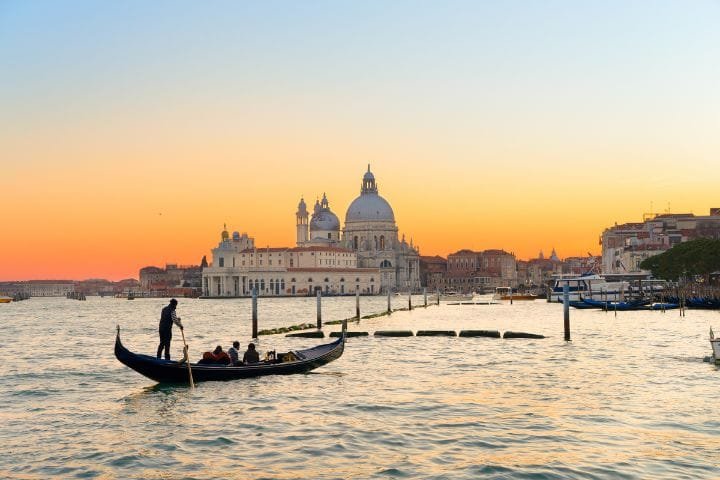
Public Transportation in Cities (€1.50-8 per day):
- Single bus/metro tickets: €1.50-2.50 depending on the city
- Day passes: €4-7 for unlimited urban transport
- Weekly passes: €15-25 for extended city stays
- Tourist transport cards: €8-15, including some attraction discounts
Train Travel Between Cities:
- Regional trains: €8-25 for medium distances, no reservations required
- High-speed trains: €25-79 for major routes when booked in advance
- Last-minute high-speed: €50-150+ for same-day bookings
- Rail passes: €150-400 for multi-journey packages (calculate if worthwhile)
Car Rental and Driving Costs (€200-500+ per week):
- Economy car rental: €25-45 per day, depending on season
- Insurance: €15-25 per day for comprehensive coverage
- Fuel: €1.60-1.80 per liter (significantly higher than US prices)
- Highway tolls: Approximately €0.07 per kilometer
- Parking: €15-40 per day in tourist areas, often difficult to find
Domestic Flights (€40-150):
- Budget airlines: €40-80 for advance bookings to islands or long distances
- Full-service carriers: €80-150 with better schedules and airports
- Hidden costs: Baggage fees €20-40, airport transfers €15-50
Ferry and Boat Transport:
- Island ferries: €20-80 depending on route and season
- Car transport on ferries: Additional €80-200 for vehicle passage
- Local boat tours: €15-50 for scenic routes and day trips
Transportation Cost Examples from Real Trips
Milan to Rome:
- High-speed train: €29-79 (2h 50m)
- Regional train: €45-55 (6+ hours with connections)
- Budget flight: €50-120 plus airport transfers
- Driving: €45 tolls + €60 fuel + time = not cost-effective
Rome to Amalfi Coast:
- Train to Naples + bus: €25-35 total (3-4 hours)
- Direct bus: €15-25 (4-5 hours)
- Car rental: €40/day + fuel + tolls + parking stress
Exploring Tuscany:
- Car rental: €200-350 per week – essential for wine country access
- Train + buses: €15-30 per day trip, but limited rural access
- Guided tours: €80-150 per day, including transport and guide
Get our FREE Italy
Travel Guide
E-Book
This printable guide is your ultimate companion for exploring Italy, with insider tips, detailed itineraries, transportation advice, must-see attractions, and more.
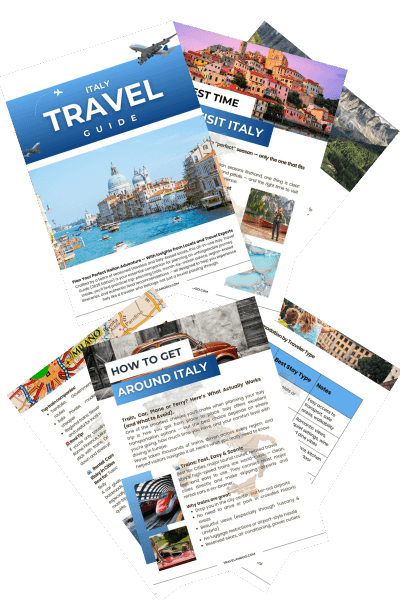
Money-Saving Transportation Strategies
Book trains in advance: High-speed train prices can triple for last-minute bookings, but advance purchase offers significant savings.
Use regional trains strategically: For scenic routes or when time isn’t critical, regional trains cost 60-70% less than high-speed options.
Consider location-based car rentals: Rent cars only when needed (Tuscany countryside) rather than for entire trips including cities.
Take advantage of city passes: Many tourist cards include unlimited public transport plus attraction discounts.
Walk whenever possible: Italian cities are incredibly walkable, and walking often beats public transport for short distances while providing cultural immersion.
Avoid tourist transport traps: Airport taxis and tourist shuttles often cost 2-3x more than public transport alternatives.
Transportation Timing and Seasonal Considerations
From my multiple Italy trips, the most cost-effective strategy combines different transport methods based on specific needs. Trains excel for major city connections, cars unlock countryside experiences, and local transport provides authentic urban immersion. The travelers who overspend on transportation are usually those who try to force one method for everything instead of matching transport choices to specific routes and experiences.
Peak season surcharges: Summer car rentals can cost 50-100% more than winter, with limited availability.
Advance booking benefits: Trains and flights reward early planning with significant savings.
Regional variations: Northern Italy has excellent public transport; southern regions often require more creative transport solutions.
Activities Cost in Italy
Many Italian sights are free to enjoy, but museums, tours, and experiences can range from €5 to €150+. The key to managing activity costs is understanding which paid experiences are worth the investment and which free alternatives provide equally memorable moments.
Free and Low-Cost Attractions (€0-10):
- Churches and cathedrals: Most are free, including St. Peter’s Basilica and countless neighborhood gems
- Historic city centers: Walking through Rome, Florence, or Venice costs nothing but provides incredible experiences
- Public squares and fountains: Piazza Navona, Trevi Fountain, and Spanish Steps are always accessible
- Markets and neighborhoods: Local markets, Trastevere in Rome, and Oltrarno in Florence, offer authentic cultural immersion
- Scenic viewpoints: Piazzale Michelangelo in Florence, Janiculum Hill in Rome provide stunning panoramas
- Small museums: €3-8 for local history museums and smaller cultural sites
Major Landmarks and Museums (€10-25):
- Colosseum: €16-18 for standard entry, €22-24 including Roman Forum and Palatine Hill
- Vatican Museums: €17-20 online, €20-25 at entrance (often sold out)
- Uffizi Gallery: €20-25, advance booking essential during peak season
- Doge’s Palace (Venice): €25-30 including Bridge of Sighs access
- Duomo dome climbs: €15-26 for Florence cathedral dome, Milan cathedral rooftop
- Pompeii: €16-18 for archaeological site entry
Guided Tours and Experiences (€25-80):
- Walking tours: €20-35 for 2-3 hour city introductions
- Food tours: €45-85 including tastings and cultural insights
- Museum guided tours: €35-55 for expert commentary and skip-the-line access
- Day trips from cities: €50-80 for Tuscany from Florence, Pompeii from Rome
- Cooking classes: €60-120 for hands-on experiences including meals
Premium Experiences (€100-300+):
- Private guides: €150-250 per day for personalized experiences
- Wine tours with transport: €120-200 for full-day Tuscany or Chianti experiences
- Vespa tours: €80-150 for guided countryside exploration
- Boat tours: €100-250 for Amalfi Coast or Lake Como private excursions
- Truffle hunting: €180-300 for seasonal experiences in Umbria or Piedmont
City Pass and Museum Pass Value Analysis
Roma Pass (€32-52): Includes public transport plus free entry to the first two attractions, then discounts. Breaks even if you visit 3+ paid sites plus use public transport.
Florence City Pass (€85-100): Covers major museums including Uffizi and Accademia, plus public transport. Worth it for museum-focused visits during peak season when individual bookings are difficult.
Venice City Pass (€30-80): Various options including transport and attractions. Calculate based on your specific planned activities.
Free Cultural Experiences Worth Seeking
Aperitivo culture: Join locals for evening drinks with free food spreads – authentic social experiences that cost only the price of drinks.
Church concerts: Many churches host free or low-cost classical music performances in stunning settings.
Festival participation: Local sagre (food festivals) and seasonal celebrations offer authentic cultural immersion.
Market exploration: Morning markets provide incredible people-watching and cultural insight without entry fees.
Sunset viewing: Italy’s incredible light costs nothing but provides some of the most memorable travel moments.
Smart Activity Budgeting Strategies
Prioritize your must-sees: Book 2-3 major paid attractions in advance, then fill in with free exploration.
Mix paid and free experiences: Balance expensive guided tours with self-directed free walking and discovery.
Take advantage of free museum days: Many cities offer free entry on the first Sundays of the month during the off-season.
Consider timing for value: Off-season visits often include special exhibitions and events without peak pricing.
Book combo tickets: Many sites offer package deals that reduce per-attraction costs.
Activity Costs in Italy by Travel Style
The reality I’ve discovered across multiple Italy trips is that some of the most memorable experiences cost absolutely nothing – watching sunset from Roman bridges, getting lost in Venetian back canals, or sharing conversation with locals in neighborhood squares. The paid attractions provide important cultural context and access to incredible art, but they work best when balanced with authentic free experiences that connect you to contemporary Italian life.
Budget approach (€10-25 per day): Focus on free attractions, self-guided exploration, and 1-2 major paid sites per week.
Mid-range approach (€30-60 per day): Mix of major attractions, occasional guided tours, and premium experiences as highlights.
Luxury approach (€80-200+ per day): Private guides, exclusive access, and premium experiences that provide unique perspectives and convenience.
Italy Travel Cost by Budget Type
Understanding how much you can realistically experience Italy at different budget levels helps you plan appropriately and set expectations for your trip style and comfort level.
Budget Travel in Italy (€60–€90/day)
Backpacking through Italy is possible with careful planning, hostel stays, and street food. During my early Italy trips as a budget backpacker, I discovered that limited money doesn’t mean limited experiences – it just requires smarter choices and more creativity.
Daily Budget Breakdown:
- Accommodation: €25-40 (hostels, shared rooms, budget guesthouses)
- Food: €15-25 (street food, market meals, picnics, aperitivo strategy)
- Transportation: €8-15 (regional trains, buses, walking, day passes)
- Activities: €5-15 (free attractions, occasional museum, self-guided exploration)
- Miscellaneous: €5-10 (water, snacks, small purchases)
One Day in Rome on a Budget
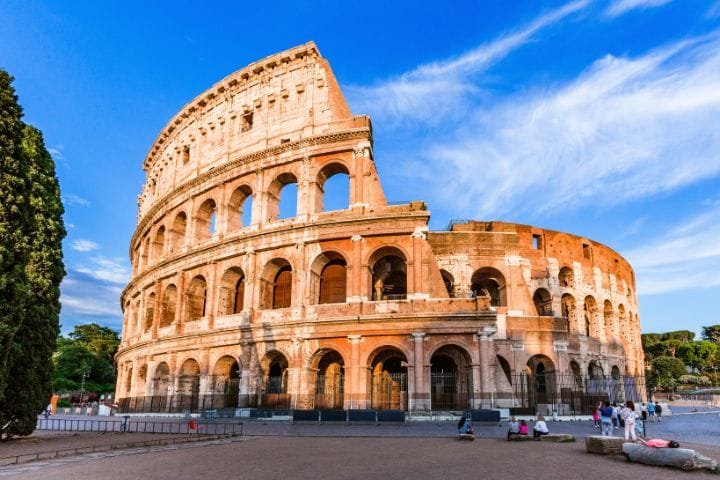
Even in a city as iconic as Rome, you don’t need to spend a fortune to experience its magic. With a bit of planning, you can soak up world-class art, ancient history, and authentic Italian flavors — all without breaking the bank.
- Breakfast: €3 (cornetto and cappuccino at local bar)
- Hostel bed: €30 (shared room in central location)
- Lunch: €8 (pizza al taglio and water)
- Metro day pass: €7 (unlimited city transport)
- Colosseum entry: €16 (major attraction splurge)
- Aperitivo dinner: €12 (drinks with substantial free food)
- Gelato: €3 (evening treat)
- Total: €79
7 Days in Italy on a Budget
A week in Italy doesn’t have to drain your savings. With smart choices on transport, stays, and meals, you can explore historic cities, charming villages, and stunning landscapes — all while keeping costs in check.
Days 1-3: Rome (€75/day average) Stay in a hostel near Termini, focus on free attractions (churches, fountains, markets), one major paid site per day, utilize aperitivo culture for affordable dining.
Days 4-5: Florence (€70/day average) Budget accommodation in Oltrarno, walk everywhere, visit free churches with incredible art, splurge on Uffizi entry, picnic lunches from Mercato Centrale.
Days 6-7: Venice (€85/day average) Stay in Mestre for cheaper accommodation, take the regional train to Venice, focus on wandering and free attractions, one major site (Doge’s Palace), avoid tourist restaurants.
Best Places For Budget Travel in Italy
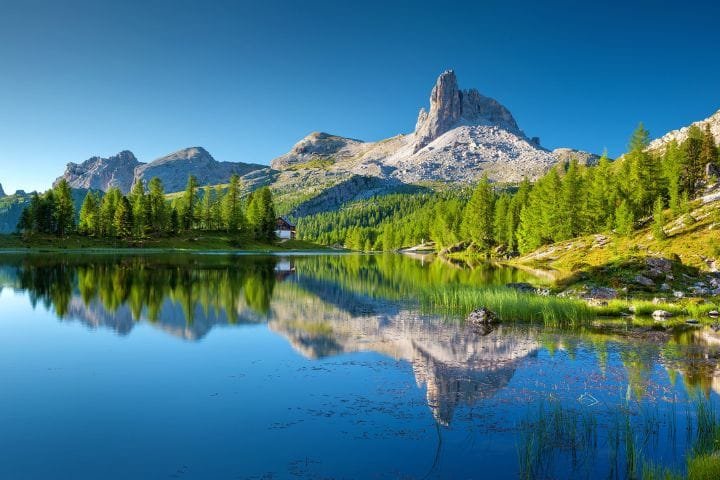
Italy is filled with destinations that deliver rich culture, stunning scenery, and unforgettable food — without the luxury price tag. From vibrant cities to hidden countryside gems, these spots prove you can explore la dolce vita on a budget.
- Southern Italy: Significantly lower costs with authentic experiences
- Sicily: Incredible value for food, accommodation, and cultural experiences
- Smaller cities: Bologna, Verona, Padua offer big-city experiences without Rome/Venice pricing
- Off-season anywhere: November-March provides dramatic savings
Budget Travel Strategies That Actually Work:
Accommodation hacks:
- Stay in hostels with kitchen access for breakfast and snack preparation
- Book accommodations slightly outside city centers for major savings
- Consider overnight trains for long distances to save on hotel costs
Food cost management:
- Shop at local markets for fresh, affordable ingredients
- Take advantage of aperitivo culture (6-8 PM) for substantial free food
- Eat lunch at restaurants offering menu del giorno (daily menu) specials
- Avoid anything within two blocks of major tourist attractions
Transportation savings:
- Use regional trains instead of high-speed when time allows
- Walk whenever possible – Italian cities are incredibly pedestrian-friendly
- Buy weekly transport passes for extended city stays
- Consider overnight buses for long distances
Activity optimization:
- Focus on free attractions and self-guided exploration
- Take advantage of free museum days (often first Sunday of the month)
- Join free walking tours and tip based on experience quality
- Prioritize 1-2 major paid attractions per city rather than trying to see everything
Reality check from experience: Budget travel in Italy requires flexibility, patience, and willingness to embrace local rhythms. You’ll eat where locals eat, stay in neighborhoods tourists rarely see, and often have more authentic cultural experiences than travelers spending 3x as much. The trade-offs include less comfort, more planning required, and occasional inconveniences, but the cultural immersion and affordability make it worthwhile for many travelers.
Mid Range Travel in Italy (€150–€250/day)
This mid-range budget level represents the sweet spot for most travelers – enough comfort and convenience to relax and enjoy your vacation while still maintaining reasonable costs and authentic experiences. Enjoy a comfortable stay, a mix of dining options, and guided tours without breaking the bank.
Daily Budget Breakdown:
- Accommodation: €80-150 (3-star hotels, nice Airbnbs, boutique properties)
- Food: €40-70 (mix of casual and nice dining, occasional splurges)
- Transportation: €20-35 (high-speed trains, taxis when needed, comfort priority)
- Activities: €25-50 (major attractions, occasional guided tours, cultural experiences)
- Various: €15-25 (shopping, unexpected costs, comfort items)
Mid Range Day in Florence
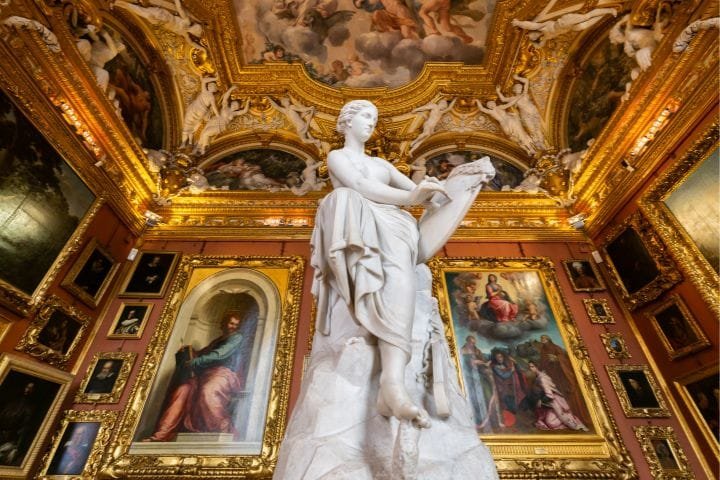
With a mid-range budget in Florence, you can strike the perfect balance between comfort and indulgence — enjoying iconic attractions, memorable meals, and well-located accommodations without overspending.
- Breakfast: €8 (hotel breakfast or nice café with pastries)
- 3-star hotel: €120 (comfortable room with private bathroom, central location)
- Lunch: €25 (trattoria meal with wine in Oltrarno neighborhood)
- Uffizi Gallery: €20 (advance booking, skip-the-line access)
- Transportation: €15 (taxis, buses as needed for comfort)
- Dinner: €45 (quality restaurant with local wine and multiple courses)
- Gelato and coffee: €8 (afternoon treats and evening café visits)
- Total: €241
Mid Range One Week Itinerary in Italy
A mid-range budget in Italy (€1,050-1,750 total) opens the door to charming hotels, regional cuisine, and a mix of iconic sights and authentic local experiences. In just one week, you can savor the best of Italy in comfort — without going overboard on spending.
Days 1-3: Rome (€180/day average) Stay in a boutique hotel near the historic center, balance major paid attractions (Vatican, Colosseum) with free exploration, dine at a mix of local trattorias and tourist-friendly restaurants, use taxis occasionally for convenience.
Days 4-5: Tuscany (€200/day average) Rent a car for countryside exploration, stay in agriturismo with dinner included, visit wineries with tastings, explore hill towns like San Gimignano and Siena, enjoy authentic rural experiences.
Days 6-7: Venice (€220/day average) Stay in canal-view accommodation, take a gondola ride (tourist splurge), visit major attractions with advance bookings, dine at a mix of bacari (wine bars) and restaurants, use water taxis occasionally.
Mid-Range Comfort Features:
- Better locations: Central accommodations that reduce transport time and costs
- Convenience factors: Skip-the-line tickets, advance bookings, occasional taxis
- Dining variety: Mix of authentic local places and tourist-friendly options
- Experience upgrades: Guided tours, wine tastings, cultural activities
- Flexibility: Budget room for spontaneous decisions and unexpected opportunities
Ideal for Couples and Small Families: This budget level works particularly well for romantic trips and family vacations where comfort and convenience matter more than absolute cost minimization. You can enjoy nice dinners without budget stress, stay in comfortable accommodations, and access experiences that enhance rather than complicate your Italian adventure.
Get our FREE Italy
Travel Guide
E-Book
This printable guide is your ultimate companion for exploring Italy, with insider tips, detailed itineraries, transportation advice, must-see attractions, and more.

Mid-Range Money Management Strategies:
Accommodation optimization:
- Book 3-star hotels or quality Airbnbs in great locations
- Consider agriturismos in rural areas for authentic experiences with excellent value
- Look for properties that include breakfast to reduce daily food costs
Dining balance:
- Splurge on 2-3 special meals per week while eating casually on other days
- Take advantage of lunch menus at nice restaurants for better value
- Balance expensive tourist areas with neighborhood dining discoveries
Transportation smart choices:
- Use high-speed trains for major routes to save time
- Rent cars specifically for regions where they add value (Tuscany, countryside)
- Mix public transport with occasional taxis for convenience
Activity prioritization:
- Book major attractions in advance to avoid disappointment
- Include 1-2 guided experiences per week for deeper cultural understanding
- Balance paid attractions with free exploration and authentic experiences
Seasonal considerations for mid-range travel:
- Shoulder seasons (April-May, September-October) provide optimal value
- Summer requires advance booking but offers extended hours and activities
- Winter provides excellent value with authentic local experiences
From my mid-range Italy travels, this budget level eliminates most daily financial stress while maintaining authentic experiences and cultural immersion. You’re not constantly calculating costs, can be spontaneous with dining and activities, and have enough comfort to truly relax and enjoy your Italian adventure. It’s the level where Italy travel becomes genuinely enjoyable rather than a constant budget management exercise.
Luxury Travel in Italy (€350–€700+/day)
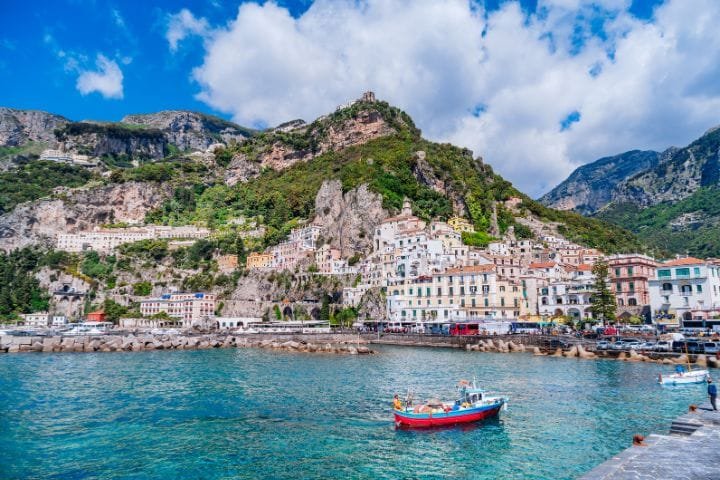
From private yachts on the Amalfi Coast to exclusive wine tastings in Tuscany, Italy is a playground for luxury. During my luxury Italy experiences, I’ve discovered that high-end travel here isn’t just about expensive hotels – it’s about accessing exclusive experiences, personalized service, and unique perspectives that transform your understanding of Italian culture.
Daily Budget Breakdown:
- Accommodation: €200-600+ (4-5 star hotels, luxury resorts, exclusive villas)
- Food: €80-200+ (fine dining, wine experiences, private chefs, Michelin restaurants)
- Transportation: €70-170+ (private transfers, first-class trains, domestic flights, luxury car rentals)
- Activities: €100-300+ (private guides, exclusive tours, premium experiences, VIP access)
- Various: €50-100+ (shopping, spa services, concierge services, luxury amenities)
Luxury Day in Tuscany
A luxury day in Tuscany means indulging in the region’s finest — from chauffeured vineyard tours and gourmet dining to stays in historic villas with sweeping countryside views. It’s the ultimate way to experience la dolce vita in style.
- Breakfast: €35 (room service at luxury resort overlooking vineyards)
- Villa accommodation: €550 (private villa with pool and vineyard views)
- Private wine tour: €200 (exclusive tastings at family estates with expert guide)
- Lunch: €80 (Michelin-recommended restaurant with wine pairings)
- Spa treatment: €120 (couples massage at resort spa)
- Private dinner: €190 (chef preparing traditional meal with premium local ingredients)
- Premium wine: €45 (rare vintage from estate collection)
- Total: €1,220
Luxury Week Itinerary in Italy
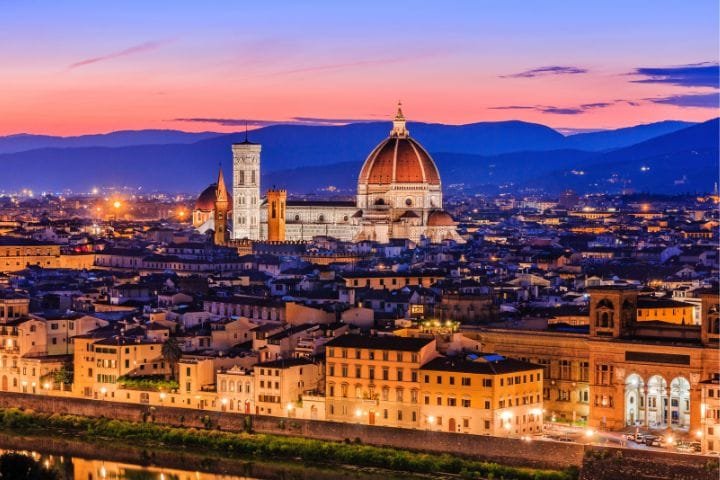
A luxury week in Italy is all about unforgettable experiences — think 5-star hotels, private guides, Michelin-starred dining, and exclusive access to the country’s most iconic sights. It’s the ultimate way to savor la dolce vita without compromise.
Days 1-3: Rome (€400/day average) Stay at a luxury hotel near Spanish Steps, private guide for the Vatican and major sites, Michelin-starred dining experiences, private driver for convenience, exclusive after-hours museum access.
Days 4-6: Tuscany (€500/day average) Private villa rental with chef and concierge, exclusive winery experiences with owners, helicopter tour over countryside, private cooking classes with renowned chefs, luxury spa treatments.
Days 7: Amalfi Coast (€600/day average) Cliffside resort with infinity pool, private yacht charter along coastline, exclusive restaurant reservations, helicopter transfer between destinations, personal shopping experiences.
Total: €3300-5900+
High-End Experiences Worth the Splurge
Exclusive access opportunities:
- After-hours museum visits: Private Vatican tours, exclusive Uffizi access
- Behind-the-scenes experiences: Wine cellars, artisan workshops, private collections
- VIP cultural events: Opera premieres, festival access, exclusive exhibitions
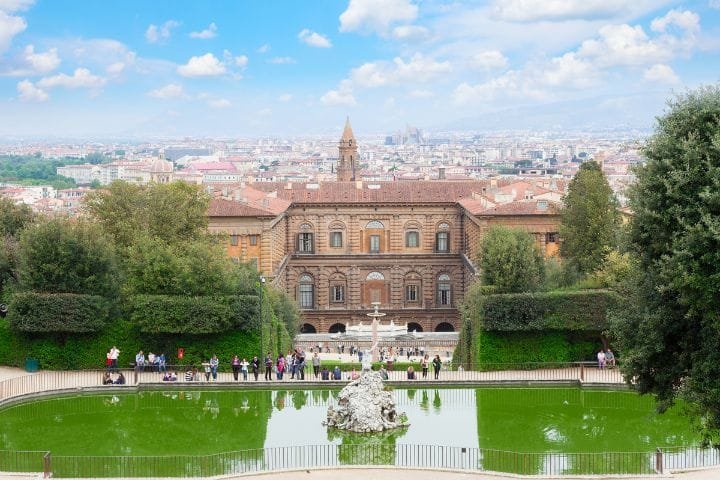
Luxury transportation:
- Private helicopter transfers: Skip traffic, enjoy aerial views, ultimate convenience
- Luxury car and driver: Stress-free exploration with local knowledge
- First-class train travel: Premium comfort with gourmet meals and superior service
- Private yacht charters: Coastal exploration with personalized itineraries
Culinary excellence:
- Michelin-starred restaurants: World-class dining in stunning Italian settings
- Private chef experiences: Personalized meals using local ingredients
- Exclusive wine tastings: Access to rare vintages and family estate collections
- Truffle hunting: Seasonal luxury experiences in Umbria and Piedmont
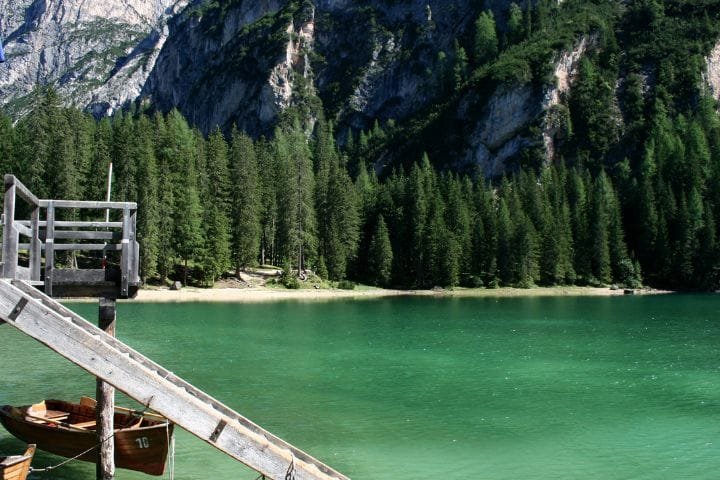
Accommodation luxury:
- Historic palazzos: Staying in converted noble residences with original frescoes
- Clifftop resorts: Infinity pools overlooking Mediterranean coastlines
- Private villas: Complete privacy with staff, pools, and vineyard settings
- Luxury spa resorts: Wellness experiences in stunning natural settings
Luxury Travel Advantages:
Time optimization: Private guides and transfers maximize sightseeing efficiency while providing insider knowledge and cultural context.
Exclusive access: VIP experiences and after-hours access provide unique perspectives impossible with standard tourism.
Personalized service: Concierge services, private guides, and customized itineraries cater to individual interests and preferences.
Stress elimination: Private transportation, advance reservations, and premium service remove logistical concerns.
Cultural immersion: High-end experiences often provide deeper cultural access through personal connections and exclusive opportunities.
Luxury Booking Strategies:
Plan far in advance: Premium accommodations and exclusive experiences often book 6-12 months ahead, especially during peak season.
Use specialized travel advisors: Luxury travel specialists have relationships for access and upgrades unavailable to individual bookings.
Consider shoulder season: May-June and September-October provide optimal weather with slightly better availability than peak summer.
Invest in experiences over things: Unique Italian experiences create lasting memories more than luxury shopping or material purchases.
The reality of luxury travel in Italy is that money opens doors to experiences genuinely impossible at other budget levels – private museum tours, exclusive wine cellars, personal relationships with artisans, and cultural access that provides profound insights into Italian heritage.
While expensive, these experiences often become transformative travel memories that justify the investment for travelers who value cultural immersion, convenience, and exclusive access over cost savings.
How the Season Impacts Italy Travel Costs
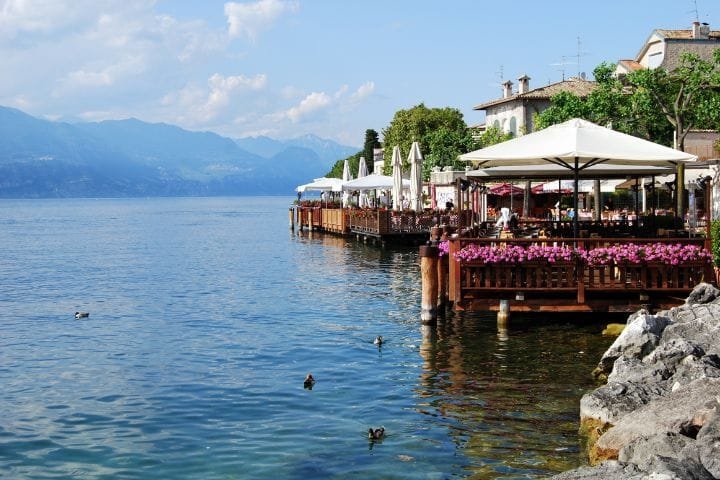
Traveling in July can cost 30–50% more than in November due to peak tourism pricing. Seasonal cost variations in Italy are dramatic enough to completely change your budget requirements, sometimes making the difference between affordable and unattainable trips.
Peak Season Costs (June-August)
Accommodation price explosion: Summer accommodation costs can increase 200-400% compared to winter, with some Amalfi Coast hotels charging €800+ for rooms that cost €200 in January. Venice and popular Tuscan destinations see similar dramatic increases.
Transportation premiums:
- Flights to Italy: 100-200% higher than winter flights
- Car rentals: Often double winter prices with limited availability
- Train prices: High-speed trains maintain consistent pricing, but advance booking becomes essential
- Ferry costs: Island connections reach peak pricing with advance booking required
Activity and dining surcharges:
- Restaurant prices: Tourist areas add significant markups during peak season
- Tour costs: Guided experiences often include summer premiums
- Attraction access: Popular sites require expensive skip-the-line options
- Beach clubs: Coastal access can cost €50-100+ per day during peak summer
Real summer cost impact: A mid-range couple spending €150/day in November might need €220-280/day for identical experiences in July, purely due to seasonal pricing without any change in travel style or comfort level.
Shoulder Season Sweet Spots (April-May, September-October)
Optimal value proposition: Shoulder seasons offer arguably the best value-to-experience ratio in Italy, with excellent weather and moderate pricing that avoids both peak season chaos and off-season limitations.
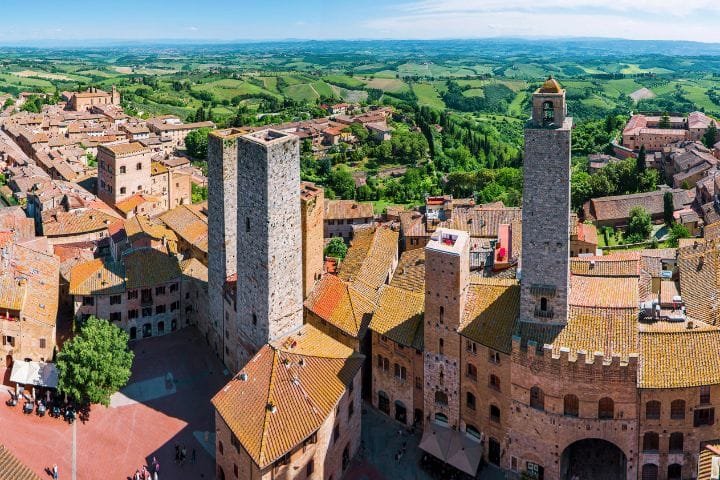
Cost advantages:
- Accommodation: 25-40% less than peak summer, with good availability
- Flights: Moderate pricing without extreme summer premiums
- Activities: Standard pricing with less crowded experiences
- Dining: Normal local pricing without tourist season markups
Weather and experience benefits: Perfect temperatures for walking and outdoor activities, spring blooms or autumn colors, comfortable conditions for cultural exploration, and local festivals without overwhelming crowds.
Low Season Savings (November-March)
Dramatic cost reductions: Winter travel provides 40-60% savings across most categories, making luxury experiences accessible at mid-range budgets and budget travel genuinely affordable.
Accommodation bargains:
- Rome hotels: €80-120 rooms that cost €200-300 in summer
- Tuscan agriturismos: Often include meals and wine tastings for less than summer room-only rates
- Coastal properties: Massive discounts for properties that remain open
Transportation savings:
- Flights: Lowest annual prices, especially January-February
- Car rentals: Winter rates are often 50-70% less than summer rates
- Accommodation deals: Extended stay discounts and package deals are common
Trade-offs to consider:
- Limited coastal operations: Many Amalfi Coast businesses close entirely
- Shorter daylight: December sunset by 5 PM limits sightseeing hours
- Weather variability: Northern Italy can be cold, gray, and foggy
- Reduced transport: Some rural bus routes have winter schedule reductions
Special Events and Festival Pricing
Venice Carnival (February): Hotel prices triple during Carnival week, with advance booking essential and minimum stay requirements common.
Easter Week impact: Throughout Italy, accommodation costs increase 50-100% during Easter week, with Rome seeing particularly dramatic price inflation.
Local festival effects:
- Siena Palio (July/August): Accommodation within 50km becomes extremely expensive
- Wine harvest season (September-October): Tuscany and Piedmont see moderate price increases, but unique experiences
- Christmas markets (December): Northern Italian cities experience modest price increases with a festive atmosphere
Smart Seasonal Planning Strategies
Shoulder season optimization: Book April-May or September-October for the best balance of weather, pricing, and cultural experiences. These periods often provide 90% of summer’s benefits at 70% of the cost.
Off-season luxury strategy: Winter travel makes luxury experiences accessible – Michelin restaurants, high-end hotels, and premium tours become affordable when demand drops.
Avoid peak pricing periods: July-August, Easter week, and major festival periods represent the worst value unless specific seasonal experiences justify the premium costs.
Flexible date advantages: Traveling with flexible dates allows optimization around seasonal pricing, potentially saving hundreds while accessing better experiences.
Regional seasonal strategies:
- Northern Italy: Excellent value November-March for cities, summer for mountains
- Southern Italy: Winter provides surprising value with mild weather
- Islands: Shoulder seasons offer the best balance of weather and pricing
From my experiences traveling in Italy across different seasons, understanding seasonal cost impacts helps optimize both budget and experiences. A November trip to Rome provides 80% of summer’s cultural experiences at 50% of the cost, while a September Tuscany visit offers perfect weather with moderate pricing and authentic harvest experiences unavailable during other periods.
Hidden Costs in Italy Most Travelers Forget
From ZTL fines to tipping customs, these costs can sneak up on you if you’re not prepared. After multiple Italy trips, I’ve learned that budget surprises often come from overlooked expenses that can add €20-50 per day to your costs if you’re not aware of them.
City Taxes and Tourist Fees
Tourist tax (tassa di soggiorno): €1-5 per person per night in most Italian cities, paid directly to hotels at check-out. Venice charges up to €5/night, Rome €3-6/night depending on hotel category, Florence €2-5/night. These taxes apply regardless of your accommodation budget level.
ZTL driving fines: €100-200 automatic fines for entering restricted historic zones by car. Cameras photograph license plates, and fines arrive months later. Even GPS systems sometimes fail to warn properly about these zones.
Parking fees: €20-40 per day in tourist areas when spaces are available. Many historic centers have extremely limited parking, forcing the use of expensive private garages.
Financial Service Fees
ATM withdrawal fees: €3-5 per transaction plus currency conversion charges. Using credit cards often provides better exchange rates than cash withdrawals.
Currency exchange fees: Airport and tourist area exchanges charge 5-10% markups. Banks typically offer better rates than exchange booths.
Foreign transaction fees: Many credit cards charge 2-3% for international purchases. Travel-specific cards often waive these fees.
Transportation Hidden Costs
Highway tolls: €0.07 per kilometer adds up quickly. Traveling from Milan to Rome costs approximately €45 in tolls alone, plus fuel costs.
Train ticket validation fines: €50+ penalties for unvalidated regional train tickets, even if you have valid tickets. High-speed trains don’t require validation.
Airport transfer costs: €30-50 for taxi transfers from major airports to city centers. Public transport often costs €8-15 for similar routes.
Dining and Service Costs
Coperto (cover charge): €1.50-4 per person at restaurants for bread, table service, and utensils. This isn’t a scam – it’s standard Italian practice.
Water charges: €2-4 for bottled water at restaurants. Tap water is safe, but not always offered automatically.
Sitting fees at cafés: Coffee costs €1-1.50 standing at the bar, €3-4 sitting at tables. The price difference reflects table service charges.
How to Save Money When Traveling in Italy
Use regional trains, eat like a local, and book museum tickets in advance to cut costs without cutting experiences. Smart travelers can significantly reduce costs while maintaining authentic Italian experiences.
Transportation Money-Saving Hacks
Regional train strategy: Use slower regional trains for scenic routes – they cost 60-70% less than high-speed options and often provide better countryside views.
Advance train booking: High-speed train prices can triple for last-minute purchases. Book 1-4 months ahead for significant savings.
Walk strategically: Italian cities are incredibly walkable. Walking often beats public transport for short distances while providing cultural immersion.
Public transport optimization: Weekly transport passes provide better value than daily tickets for extended city stays.
Dining Tips for Authentic Affordable Meals
Aperitivo culture exploitation: 6-8 PM drinks often include substantial free food that can substitute for dinner while providing authentic social experiences.
Lunch menu advantages: Nice restaurants offer lunch menus 30-40% cheaper than dinner service with identical food quality.
Market shopping: Local food markets provide incredible ingredients for picnics and snacks at a fraction of restaurant costs.
Neighborhood restaurant discovery: Walk 3-4 blocks from major attractions for local pricing and better food quality.
Avoid tourist traps: Restaurants with multilingual menus and photos near attractions typically offer mediocre food at inflated prices.
Free Attractions and Museum Strategies
Free museum days: Many cities offer free entry on first Sundays during the off-season months.
Church exploration: Most churches are free and contain incredible art, including works by famous Renaissance masters.
Self-guided walking: Historic city centers provide amazing cultural experiences without entry fees.
Market and neighborhood immersion: Local markets and residential areas offer authentic cultural experiences at no cost.
Sunset viewing: Italy’s incredible light and scenic viewpoints cost nothing but provide memorable experiences.
Italy Travel Cost: Sample Budgets for Popular Itineraries
See how much you’ll spend for 7, 10, and 14 days in Italy based on your travel style. These realistic budgets include all major expense categories based on actual travel experiences.
Cost of One Week in Italy: Rome, Florence & Venice Loop
Budget Version (€420-630 total):
- Accommodation: €25-40/night hostels
- Food: €15-25/day street food and markets
- Transport: €80 regional trains
- Activities: €50 major attractions only
- Daily average: €60-90
Mid-Range Version (€1,050-1,750 total):
- Accommodation: €80-150/night 3-star hotels
- Food: €40-70/day restaurant mix
- Transport: €150 high-speed trains
- Activities: €200 attractions and tours
- Daily average: €150-250
Luxury Version (€2,450-4,900+ total):
- Accommodation: €200-600+/night luxury hotels
- Food: €80-200+/day fine dining
- Transport: €300 first-class and taxis
- Activities: €700+ private guides and exclusive access
- Daily average: €350-700+
Amalfi Coast & Southern Italy (10 Days)
Budget approach: €700-1100 total, focusing on public transport, budget accommodation, and local dining.
Mid-range comfort: €1,500-2,500 total with car rental, comfortable hotels, and activity mix.
Luxury experience: €3,500-7,000+ with premium resorts, private experiences, and luxury transport.
Northern Italy & Dolomites Road Trip (14 Days)
Budget strategy: €840-1,260 total using hostels, regional transport, and self-guided activities.
Mid-range adventure: €2,100-3,500 total with car rental, agriturismo stays, and guided experiences.
Luxury exploration: €5900-10,800+ with luxury accommodations, private guides, and premium experiences.
📚 Check Out Related Articles
👉 Italy Travel Guide (2025 Edition) – Everything you need to plan your perfect trip, from itineraries to insider tips.
👉 Best Time to Visit Italy – Find the ideal season for your travel style and budget.
👉 How to Get Around Italy – Trains, buses, cars, and more—compare the best options for exploring the country.
Final Thoughts: Planning Your Italy Trip in 2025
Understanding Italy’s travel costs upfront ensures a smoother trip — and lets you focus on gelato, sunsets, and memories instead of receipts. The key to successful Italy travel budgeting is realistic expectation setting, strategic cost allocation, and understanding where to save versus where to splurge for maximum experience value.
Italy rewards smart financial planning with incredible experiences across every budget level. Whether you’re backpacking on €60/day or indulging in luxury at €600+/day, the country offers authentic cultural immersion, incredible food, stunning art, and memorable experiences that justify whatever investment you choose to make.
The travelers who enjoy Italy most are those who plan appropriately for their chosen budget level, understand seasonal cost variations, account for hidden expenses, and focus spending on experiences that align with their travel values. Money spent wisely in Italy creates memories that last far longer than the temporary budget impact.
Start planning with realistic cost expectations, book major expenses in advance for better rates, and remember that some of Italy’s most magical moments – sunset views, neighborhood conversations, architectural discoveries – cost absolutely nothing but curiosity and time.
Buon viaggio!
Italy Travel Cost – Frequently Asked Questions
Is Italy expensive to visit in 2025?
Italy can be affordable or expensive depending on your travel style. Budget travelers can spend around €60–€90 per day, mid-range travelers around €150–€250, and luxury travelers €350+ per day. Prices vary by region and season.
What is the cheapest month to travel to Italy?
November, January, and February are typically the cheapest months, with lower hotel rates and fewer tourists. Airfare and attraction prices can be up to 30–50% lower compared to peak summer months.
How much does a 7-day trip to Italy cost?
A one-week trip costs approximately €420–€630 for budget travelers, €1,050–€1,750 for mid-range travelers, and €2,450+ for luxury travelers, excluding flights.
What costs should I budget for in Italy besides hotels and food?
Don’t forget city taxes, transportation costs, attraction tickets, road tolls, parking fees, and potential ZTL fines if you’re driving in restricted traffic zones.
Is it cheaper to rent a car or take trains in Italy?
For city-to-city travel, trains are often cheaper and faster. Renting a car can be more expensive due to fuel, tolls, and parking, but it offers flexibility for rural and scenic routes, especially in Tuscany, the Dolomites, or Sicily.
How can I save money while traveling in Italy?
Travel in the shoulder season, use regional trains, eat where locals eat, book accommodations early, and take advantage of free museum days and walking tours.
Get our FREE Italy
Travel Guide
E-Book
This printable guide is your ultimate companion for exploring Italy, with insider tips, detailed itineraries, transportation advice, must-see attractions, and more.

💬 We’d love to hear from you!
Have questions, tips, or personal travel stories to share? Drop them in the comments below — your insights help fellow travelers plan their adventures too.





